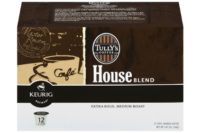Starbucks announces new leadership structure to spur growth

Building on its global momentum, Starbucks Coffee Co., Seattle, announced a new corporate structure to accelerate its growth strategy, which the company says will take effect by the end of September.
“Our company performance over the past two years has positioned Starbucks for the significant international opportunities ahead and the acceleration of our global growth strategy,” said Howard Schultz, chairman, president and chief executive officer of Starbucks Coffee Co., in a statement. “Today we are successfully executing our multi-brand, multi-channel strategy and we believe the leadership and organizational moves announced today will optimize our speed and focus going forward.”
Starbucks’ retail business currently is structured as Starbucks U.S. and Starbucks Coffee International (SCI), which encompasses 54 markets outside the United States. Starbucks will move to a new three-region organizational structure that includes the following countries:
- China and Asia Pacific: All Asia Pacific markets and China.
- Americas: United States, Canada, Mexico and Latin America.
- EMEA: Europe, U.K., Middle East, Russia and Africa.
A president for each region will oversee the company-operated retail business, working closely with both the licensed and joint-venture business partners in each market. They also will work closely with Starbucks’ Global Consumer Products and Foodservice team to continue building Starbucks brands and channels in each region.
John Culver has been named president of Starbucks China and Asia Pacific. Culver’s focus and accountability will center on Starbucks’ retail business in Asia Pacific, including China, Japan and Starbucks’ newest market entry — India, the company says. China, Japan and India are important areas of growth for the company and Culver brings the extensive global experience navigating complex operating environments to drive even greater business results in this region, it adds.
Cliff Burrows will expand his current role as president of Starbucks U.S. to president of the Americas region with responsibility for the United States, Canada, Mexico and Latin America. Under Burrows’ leadership, the U.S. business continues to set records across almost every measure of sales and customer experience, the company says. The Americas region, particularly the United States, Canada and Brazil, will continue to be a cornerstone of Starbucks’ growth, it says.
Michelle Gass has been named president, Starbucks EMEA. In this role, Gass will provide overall leadership to Starbucks’ company-operated markets in this region, including the U.K., France and Germany. She also will be responsible for growing and developing Starbucks’ joint venture and licensed operations in Europe, Russia and the Middle East.
Starbucks also is creating a multi-brand, multi-channel future by building a portfolio of branded business units beyond the Starbucks retail brand, it says.
Seattle’s Best Coffee (SBC) will continue to be an important growth opportunity, with a goal of becoming a $1 billion business over time through expanded and innovative distribution channels, partnerships, licensing, franchising and consumer packaged goods (CPG) initiatives, the company says. SBC will continue to operate as an independent business unit under the leadership of Jeff Hansberry, who will serve as SBC’s president in addition to his current role as president of Global Consumer Products and Foodservice.
The tea category is another significant opportunity for Starbucks, the company says. As the second most consumed beverage in the world after water, tea represents an $87 billion global market opportunity and the company intends to build Tazo Tea into a globally recognized multi-billion dollar brand, it says. Annie Young-Scrivner has been appointed president of Tazo, in addition to her current responsibilities as Starbucks global chief marketing officer.
Looking for a reprint of this article?
From high-res PDFs to custom plaques, order your copy today!





